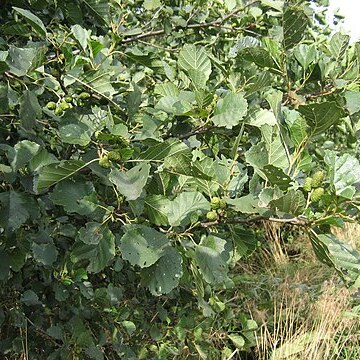Trees or shrubs deciduous, monoecious. Stipules present, free, often deciduous, rarely persistent. Leaves alternate, simple, petiolate, usually doubly serrate, rarely simply serrate, lobulate, or entire; veins pinnate. Flowers unisexual. Male inflorescence precocious, elongate, pendulous, with numerous overlapping bracts; each bract usually subtending a small dichasium with 1-3 male flowers; stamens as many as and opposite sepals or, if sepals obsolete, then stamens of inflorescence to 20; filaments very short, connate or nearly so; anthers 2-loculed, thecae connate or separate, opening by longitudinal slits. Female inflorescence pendulous or erect, with numerous overlapping bracts; each bract subtending a small dichasium with 2 or 3 flowers; calyx with 1-6 scalelike lobes, or obsolete; petals absent; ovary inferior, 2-loculed; styles 2, free; ovules 2, or 1 by abortion, pendulous from near apex of each locule. Fruit a nut or nutlet, winged or not. Seed 1, with straight embryo and flat or thickened cotyledons, without endosperm.
Deciduous trees or shrubs, monoecious. Leaves alternate, simple, pinnately veined, petiolate; stipules caducous. Inflorescence a terminal or axillary, paniculate or solitary unisexual cymose catkin or spike, bracteate. Male inflorescence pendulous. Male flowers solitary or in 3-flowered dichasia; sepals 1-6, scale-like or obsolete; corolla absent; stamens usually equal in number to, and opposite, sepals; pistillode present or absent. Female inflorescence erect. Female flowers in 2-or 3-flowered dichasia; perianth usually absent; staminodes absent; ovary inferior; carpels 2 or 3, each with 1 or 2 axile, pendulous ovules; styles usually separate. Fruit a nut or a 2-winged samara enclosed by thickened bracts and bracteoles, usually in a cone-like infructescence. Seed usually solitary, with or without endosperm.

